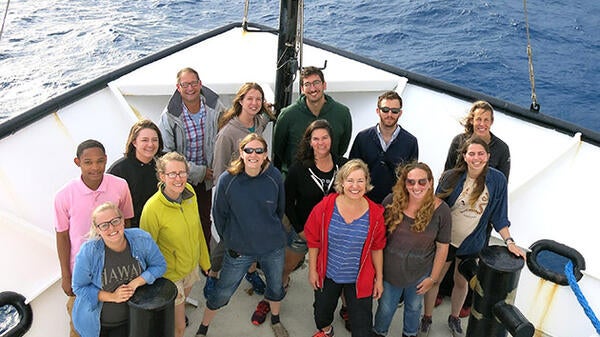Late last month, a four-day research cruise on the Sargasso Sea gave two local educators and a senior school student the opportunity to gain unique insight into what it means to live and breathe science aboard a working research vessel. The cruise was part of a project funded by the National Science Foundation (NSF) investigating the daily migrations of small marine zooplankton called copepods.
Educating the Educators
July 25, 2019
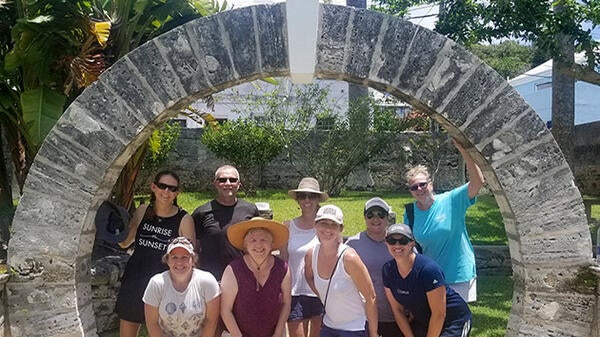
Having brought students to BIOS for more than 40 years, Ed Argenta—a teacher consultant with the Connecticut Geographic Alliance—was already familiar with what the Institute had to offer in terms of hands-on learning experiences. However, in 2012, a conversation with BIOS education staff, including Kaitlin Noyes, director of BIOS’s Ocean Academy, led to the idea of developing a summer course for educators.
Princeton Students Learn Marine Biology at BIOS
June 25, 2014
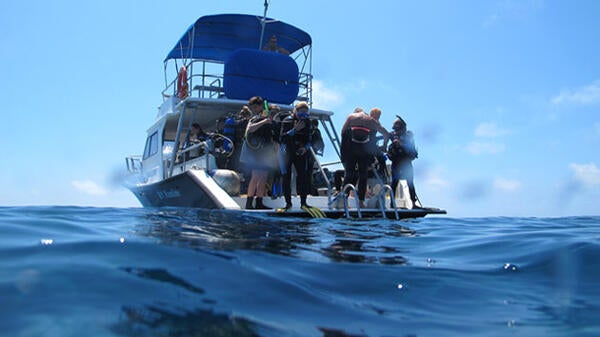
For the past nine years, a group of students from Princeton University has traveled to Bermuda each June to participate in a four-week marine biology course offered through a unique partnership between BIOS and the university. Co-taught by Dr. Samantha de Putron (Associate Scientist at BIOS and Visiting Lecturer at Princeton) and Dr. James Gould (Professor of Ecology and Evolutionary Biology, Princeton), the course is an intensive field program that covers all aspects of marine biology. Dr. Carol Gould (science writer) adds a unique perspective as a guest lecturer and—this year—Dr. Penelope Barnes (BIOS Education Director for University Programs) and Kaitlin Baird (BIOS Science Education Officer) also contributed as guest lecturers.
Teachers On Board with MARINE: Mid Atlantic Robotics IN Education
December 17, 2014
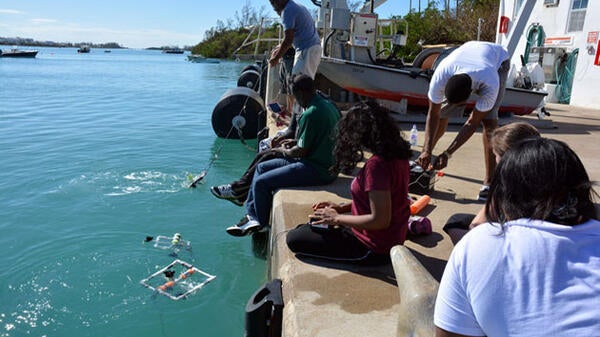
This past month, sixty primary and middle school educators from the Bermuda Union of Teachers came to BIOS to participate in a professional development workshop focused on marine robotics. The workshop involved PVC pipes, car batteries, foam noodles, propellers, and a race against time as participants were challenged to build their own Remotely Operated Vehicles (ROVs) for launch into the Sargasso Sea. Successful ROVs are neutrally buoyant and can be maneuvered through the water to complete tasks, mimicking the professional classes of underwater robotics used around the world to collect data for science and industry.
Sargasso Sea Lesson Featured in Journal of Marine Education
January 30, 2015
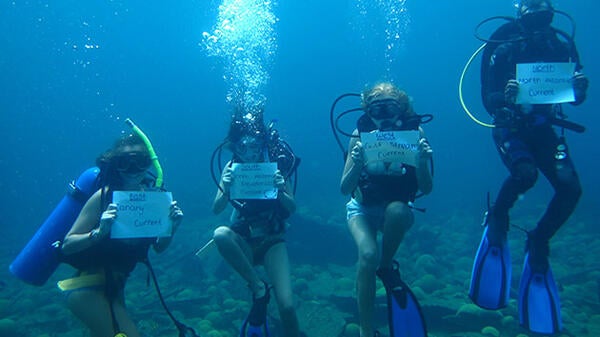
What do golden rafts of seaweed, great ocean currents, and ghost stories have in common? They all play a part in the history and ecology of the Sargasso Sea, the focus of the 2012 Explorer program at BIOS that introduced 1300 primary students to hands-on marine biology, chemistry, and physics. With the recent publication of an “Expedition Sargasso” lesson plan by Kaitlin Baird, Assistant Director of Science Education Programs at BIOS, many more students will be able to discover the unique communities that thrive in Sargassum seaweed and explore the interconnectedness of ocean ecosystems.
Student-designed Robots Make a Splash at BIOS’s ROV Challenge
May 29, 2019
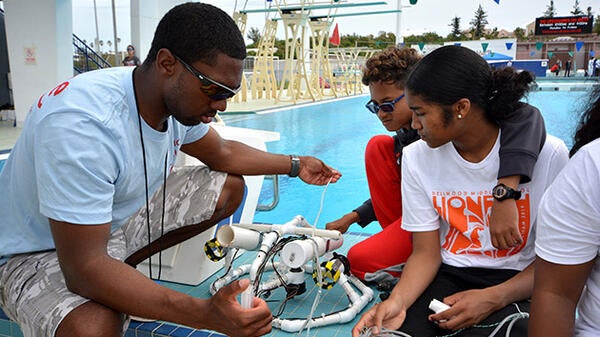
Last month, twenty-one teams from nine schools—including a new team from Impact Mentoring Academy—met at the National Sports Centre for the 2019 Marine Advanced Technology in Education (MATE) Bermuda Regional Remotely Operated Vehicle (ROV) Challenge.
A Unique Look at the Seafloor Near Bermuda
April 26, 2019
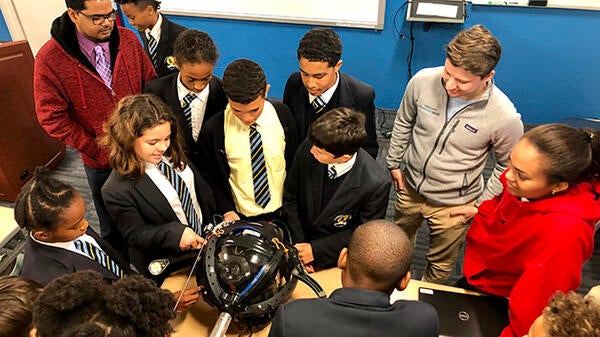
The sixgill shark approached the camera deployed from a boat floating five miles offshore Cooper’s Island in Bermuda, then did what sharks often do: tried to eat it.
HSBC Explorer Uncovers “The Secret Life of Fish”
February 20, 2014
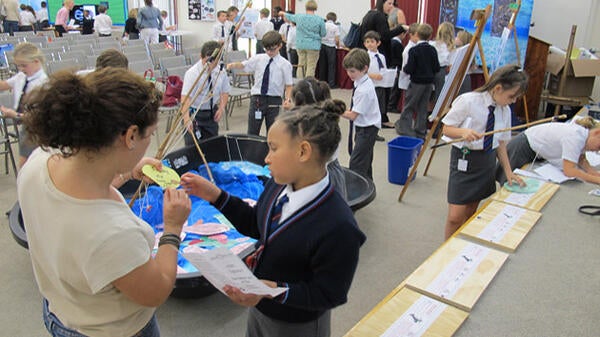
Have you ever wondered how scientists can tell how old a fish is? Or what a fish’s body and tail shape can tell you about how it swims and where it lives? For many people, fish are simply what’s on the menu, but at the 2014 HSBC Explorer Program, BIOS education staff gave students and teachers the opportunity to learn about fish from nose to tail, and from the inside out.
RenaissanceRe Announced as Lead Sponsor of BIOS’s Mid-Atlantic Robotics IN Education (MARINE) Program
January 26, 2020
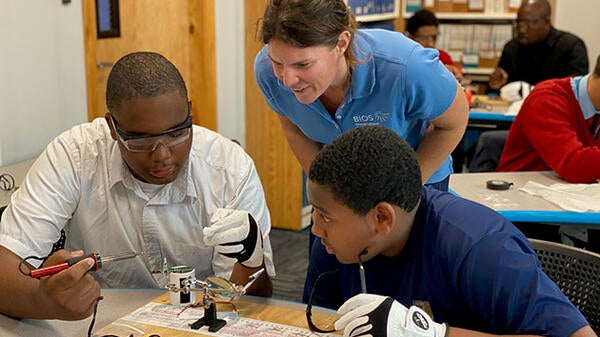
Since 2015, the Mid-Atlantic Robotics IN Education (MARINE) program has been a core component of BIOS’s Ocean Academy, which offers a suite of hands-on education and research opportunities for students and teachers in Bermuda. BIOS is pleased to announce that MARINE has a new lead sponsor in RenaissanceRe, which has generously funded the program for the next two years, supporting the program’s goals of engaging participants in scientific concepts and enhancing science, technology, engineering, and mathematics (STEM) education in the classroom.
Tiny and Tested in Bermuda
January 26, 2020
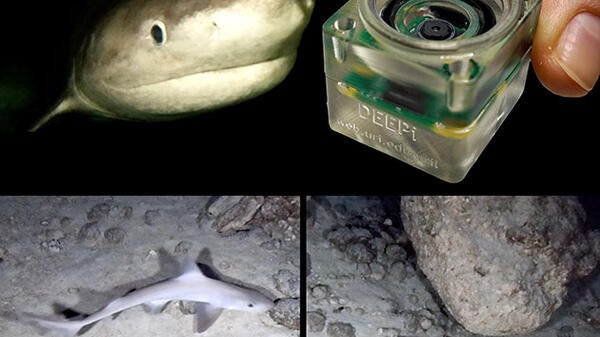
A Bermuda-tested camera that is so small and lightweight that it can rest on top of a credit card, yet is robust enough to withstand pressure from tons of ocean water while capturing video and photos at depths up to 18,044 feet (5,500 meters), has made the cover of the monthly marine sciences journal Deep Sea Oceanography, Part I.
